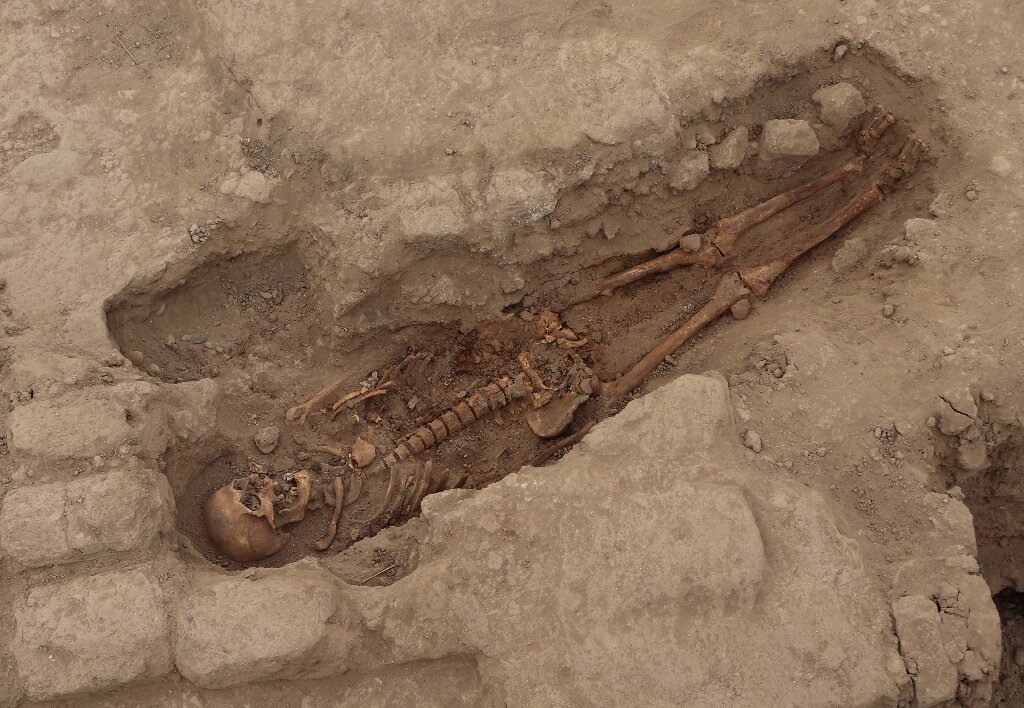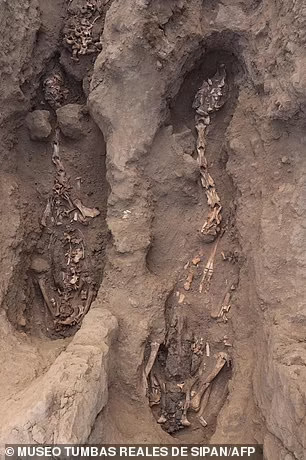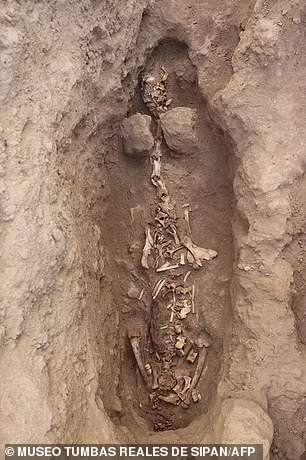The Discovery 29 people of ancient Peruvian burial tombs sheds new light on Wari culture
The human remains of 29 people, buried as sacrificial offerings more than 1,000 years ago, have been discovered in a pre-Inca temple in northern Peru. Researchers found four tombs in the Huaca Santa Rosa de Pucalá dig site, in the Lambayeque region of Peru, with the remains of children and teenagers.
They were originally buried as offerings at the time of the construction of the first of the three enclosures, including a Wari-culture temple, according to the team behind the discovery from the Lambayeque Valley Archaeological Project.
As well as the human remains, the team discovered camelids and guinea pigs showing signs of sacrificial practices.


Archaeologist Edgar Bracamonte Levano, who is also in charge of the Royal Tombs of Sipan Museum, said this was a significant discovery.
It is the first time they have registered this type of human offering linked to the Wari culture, a civilisation that flourished in the south-central Andes and coastal area of modern-day Peru, from about 500 to 1000 CE.
So far three of the enclosures discovered at the site have been excavated, according to the team behind the finding.


As well as the human remains, they also found offerings of camelids, such as alpacas, with signs of sacrifice and eight sacrificed guinea pigs.
The remains of humans and animals are part of a possible ritual that was carried out at the time of starting construction on Wari-style religious spaces, they said.
The enclosures were ‘D’ shaped, and within one was a tomb with offerings related to a group living in the area between 850 and 900 CE.
The tomb contained a pitcher with Mochica iconography, a bottle of the well-known Early Sicán or Proto-Lambayeque style, a pot with palette decoration and a knife or tumi with the blade in the shape of a half Moon.
The work also revealed a temple from the Formative Period of this community, contemporary to the end of the Chavin culture – different from earlier finds.
Bracamonte said: ‘It is a temple built with walls made of clay as formwork and that include clay maces as prototypes of adobes inside the walls.
‘The upper part of the temple presents very well elaborated floors, ceilings of vegetal remains and evidence of the incineration of objects were found.
‘The temple was built by a human group with local features and that are linked to the mountains, showing that during the years 400 to 200 BCE, ‘ he added.
‘There were different communities on the coast with interactions towards the mountains and that also show marked differences with the groups of the Formative Period found in the lower part of the valley, in Collud and Ventarrón.’
These new discoveries have added to the existence of Wari-period ceremonial spaces, forcing experts to rewrite the history of Lambayeque.





